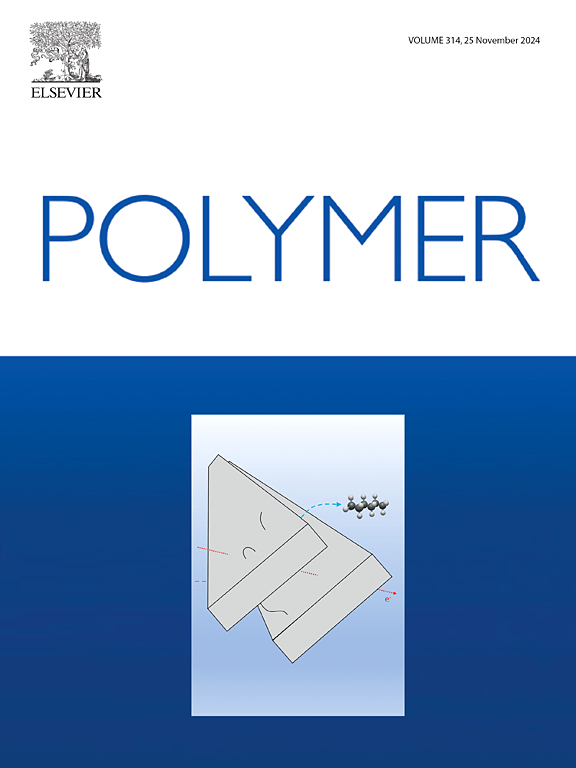Y-shape triazine-based D-π-A chromophores and polyimides for improved nonlinear optical properties and optical limiting
IF 4.1
2区 化学
Q2 POLYMER SCIENCE
引用次数: 0
Abstract
In this article, we have systematically synthesized and characterized a series of symmetrical triazine based Y-type chromophores and polymerized them with pyromellitic dianhydride monomer to yield respective polyimides. The density functional theory (DFT) calculations and photophysical measurements were performed to analyze the bandgap and electrostatic potential of the chromophores. The thermal properties of synthesized polymers were studied using differential scanning calorimetry and thermogravimetry analysis to understand the thermal behavior of the polymers. The nonlinear optical properties of the synthesized chromophores and polymers were measured using a Q-switched Nd:YAG laser (9 ns, 532 nm, 10 Hz) by Z-scan approach. A significant improvement was observed in the effective two-photon absorption and optical limiting. It was found that all the chromophores and polymers have exhibited good nonlinear optical properties and that could be employed for optical limiting applications. Among the all compounds, FNP showed high nonlinear absorption co-efficient of 1.12 × 10−10 m/W and low optical limiting threshold of 1.67 × 1012 W/m2. Thus, these polymers could be of potential candidate for commercial exploitation of optical limiting applications.


y形三嗪基D-π-A发色团和聚酰亚胺改善非线性光学性质和光限制
本文系统地合成了一系列对称的三嗪基y型发色团,并对其进行了表征,并与邻苯二甲酸二酐单体进行了聚合,得到了相应的聚酰亚胺。利用密度泛函理论和光物理测量分析了发色团的带隙和静电势。采用差示扫描量热法和热重法对合成聚合物的热性能进行了研究,以了解聚合物的热行为。利用调q Nd:YAG激光器(9 ns, 532 nm, 10 Hz),通过z扫描方法测量了合成的发色团和聚合物的非线性光学性质。在有效双光子吸收和光限方面有了显著的改善。发现所有的发色团和聚合物都表现出良好的非线性光学性质,可用于光学限制应用。其中,FNP具有较高的非线性吸收系数(1.12 × 10-10 m/W)和低的光限阈值(1.67 × 1012 W/m2)。因此,这些聚合物可能是潜在的候选物,用于光学限制应用的商业开发。
本文章由计算机程序翻译,如有差异,请以英文原文为准。
求助全文
约1分钟内获得全文
求助全文
来源期刊

Polymer
化学-高分子科学
CiteScore
7.90
自引率
8.70%
发文量
959
审稿时长
32 days
期刊介绍:
Polymer is an interdisciplinary journal dedicated to publishing innovative and significant advances in Polymer Physics, Chemistry and Technology. We welcome submissions on polymer hybrids, nanocomposites, characterisation and self-assembly. Polymer also publishes work on the technological application of polymers in energy and optoelectronics.
The main scope is covered but not limited to the following core areas:
Polymer Materials
Nanocomposites and hybrid nanomaterials
Polymer blends, films, fibres, networks and porous materials
Physical Characterization
Characterisation, modelling and simulation* of molecular and materials properties in bulk, solution, and thin films
Polymer Engineering
Advanced multiscale processing methods
Polymer Synthesis, Modification and Self-assembly
Including designer polymer architectures, mechanisms and kinetics, and supramolecular polymerization
Technological Applications
Polymers for energy generation and storage
Polymer membranes for separation technology
Polymers for opto- and microelectronics.
 求助内容:
求助内容: 应助结果提醒方式:
应助结果提醒方式:


